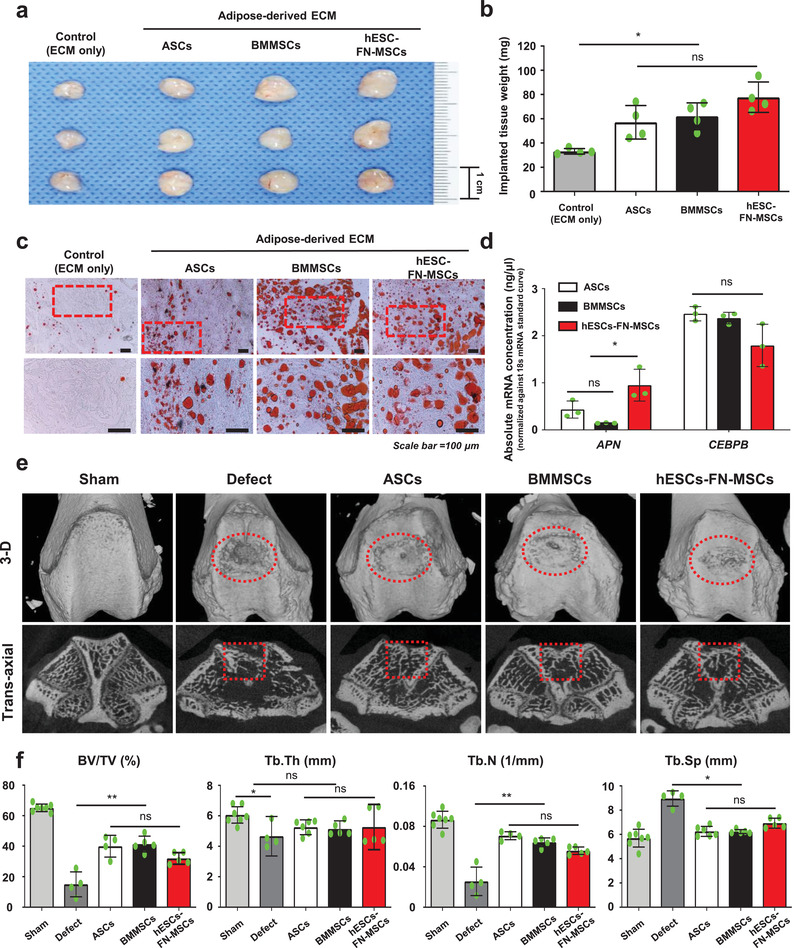Figure 5.

hESC‐FN‐MSCs are capable of in vivo differentiating into cells of multiple lineages. a) Macroscopic appearance of adipose tissue newly formed in nude mice. Human extracellular matrix powders containing ASCs, BMMSCs, and hESC‐FN‐MSCs were implanted into the back of each nude mouse for 5 weeks. The formed tissue in the hESC‐FN‐MSC‐injected group was larger than those in the ASC‐ and BMMSC‐injected groups (n = 4–5). b) The weight of adipose tissue formed in the group injected with hESC‐FN‐MSCs was compared with that formed in the groups injected with ASCs and BMMSCs. The formed tissue in the hESC‐FN‐MSC‐injected group was significantly heavier than that in the control (ECM‐only), but was not significantly different compared to the tissue in both the ASC‐ and BMMSC‐injected groups. n = 4, mean ± s.d., ns, not significant, and * P < 0.05 (one‐way ANOVA). c) Histologic examination of the formed adipose tissue, stained by Oil red O. The lipid accumulation levels between groups were not significantly different. Scale bar: 100 µm. d) hESC‐FN‐MSC‐injected group exhibited significantly higher levels of gene expression for APN than the ASC‐ and BMMSC‐injected groups. However, the expression of CEBPB in these groups was not significantly different. n = 3, mean ± s.d., ns, not significant, and * P < 0.05 (two‐way ANOVA). e) 3D reconstructed image and cross‐sectional image of micro‐CT at 8 weeks. The cross‐sectional images of the ROI (framed red square) were analyzed by bone histomorphometry, n = 7, animal per sham; n = 4–6, animal per groups. f) Bone histomorphometry of the 3D bone formation architecture analyzed in an ROI for all groups. The new bone formation in the hESC‐FN‐MSC‐injected group was similar to that in the ASCs and BMMSC‐injected groups. The plots of the parameters: percent bone volume (BV/TV, %), trabecular thickness (Tb.Th, mm), trabecular number (Tb.N, 1/mm), and trabecular separation (Tb.Sp, mm). n = 7, animal per sham; n = 4–6, animal per groups, mean ± s.d., ns, not significant, * P < 0.05, and ** P < 0.01 (one‐way ANOVA).
